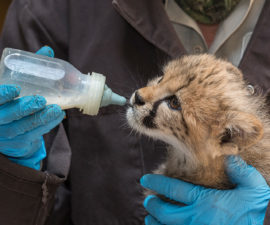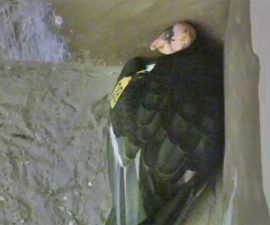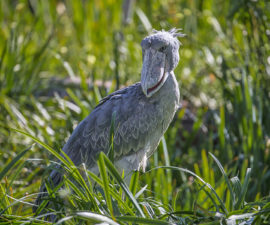BY Karyl Carmignani
Photography by Ken Bohn
With a mixture of grace and curiosity, the pack lopes effortlessly throughout its new three-acre exhibit. Last spring, a family pack of eight Asiatic wild dogs Cuon alpinus, also called dholes (pronounced “doles”), moved into the former tiger habitat in the Asian Savanna area at the Safari Park. This is the first time that Park visitors have been able to see these beautiful wild dogs on exhibit at the Park. The auburn-colored dholes have erect ears, a dark tail, and a creamy white underbelly and leg accents, making them both camouflaged and striking in the grassy, light-dappled exhibit.
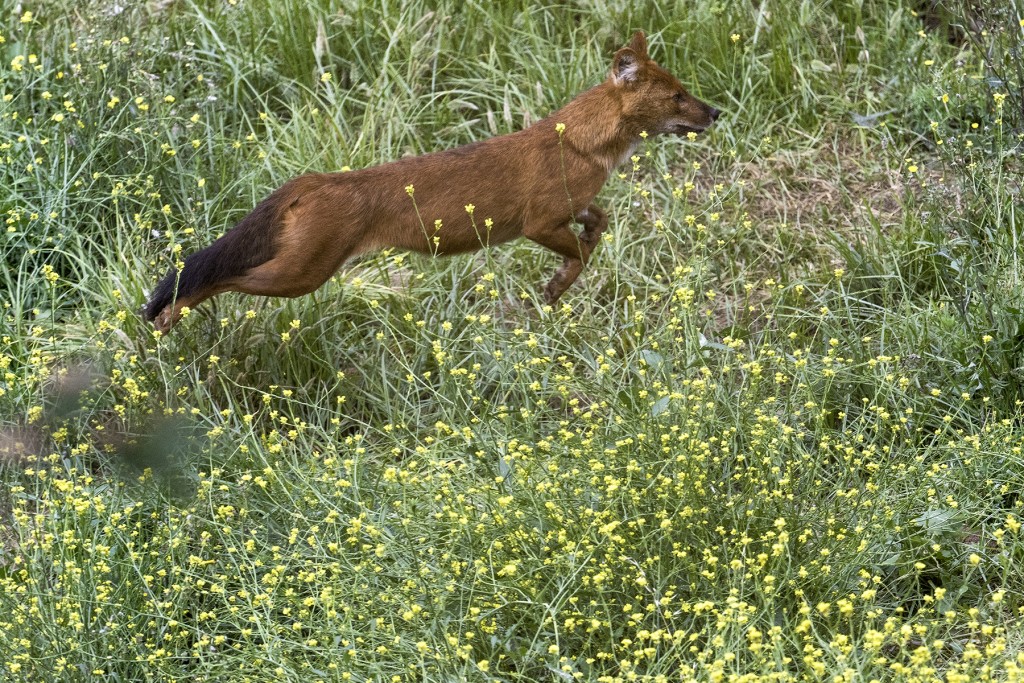
RUN LIKE THE WIND!
Asiatic wild dogs, also called dholes, are energetic and highly social animals.
Dholes are super-sensitive animals, skittish to the point of potentially overheating under stress. But “this pack surprised us with their hardy way of adjusting to their new environment and different keepers,” said Tina Hunter, senior keeper at the Safari Park. Made up of one female and eight males, including Lucius, who is the father of the rest of the group, the highly social pack has been added to the Park’s Behind-the-Scenes Safaris. “Dholes are unique animals that most people have never seen before,” said Tina. “They will be an exciting addition to our safaris.”
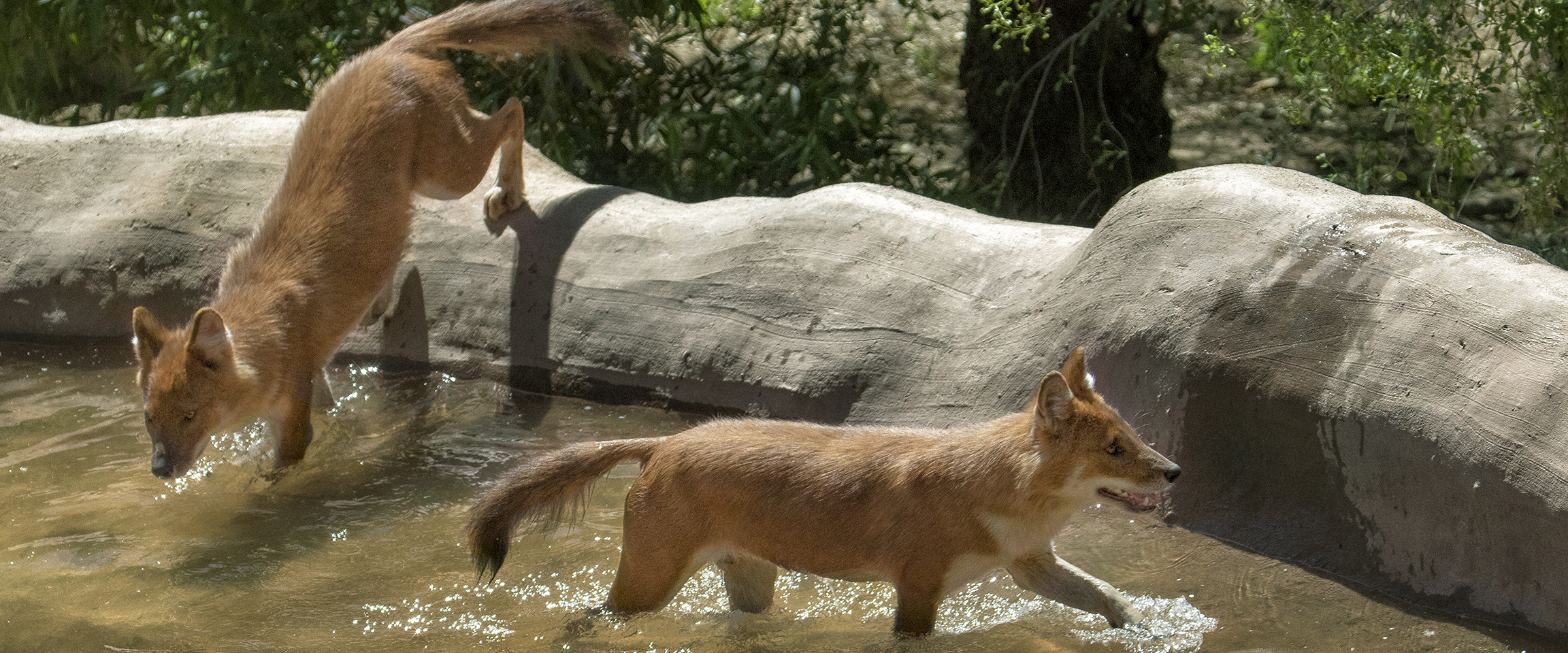
Dhole House
Once the tigers moved into the new Tull Family Tiger Trail, their former exhibit was found to be a great habitat for the dholes. The six separate indoor bedrooms are arranged in a horseshoe shape. “The tigers, as a solitary species, weren’t so keen on this arrangement, but the highly social dholes like to keep an eye on each other,” explained Tina. There is a feed chute on each door that was used to dispense bones and other treats for the tigers, which also works for dhole treats. The vast outdoor area of the dhole habitat needed a few adjustments. “Dholes are great diggers, so the underground, three-foot barrier along the fenceline was closely inspected and reinforced before they moved in,” said Tina. Dholes are also devoted water lovers, so the existing pool is a favorite hang-out spot. “We built a shelter over part of the pool so the dholes can spend more time in the water, even when the sun is strongest.”
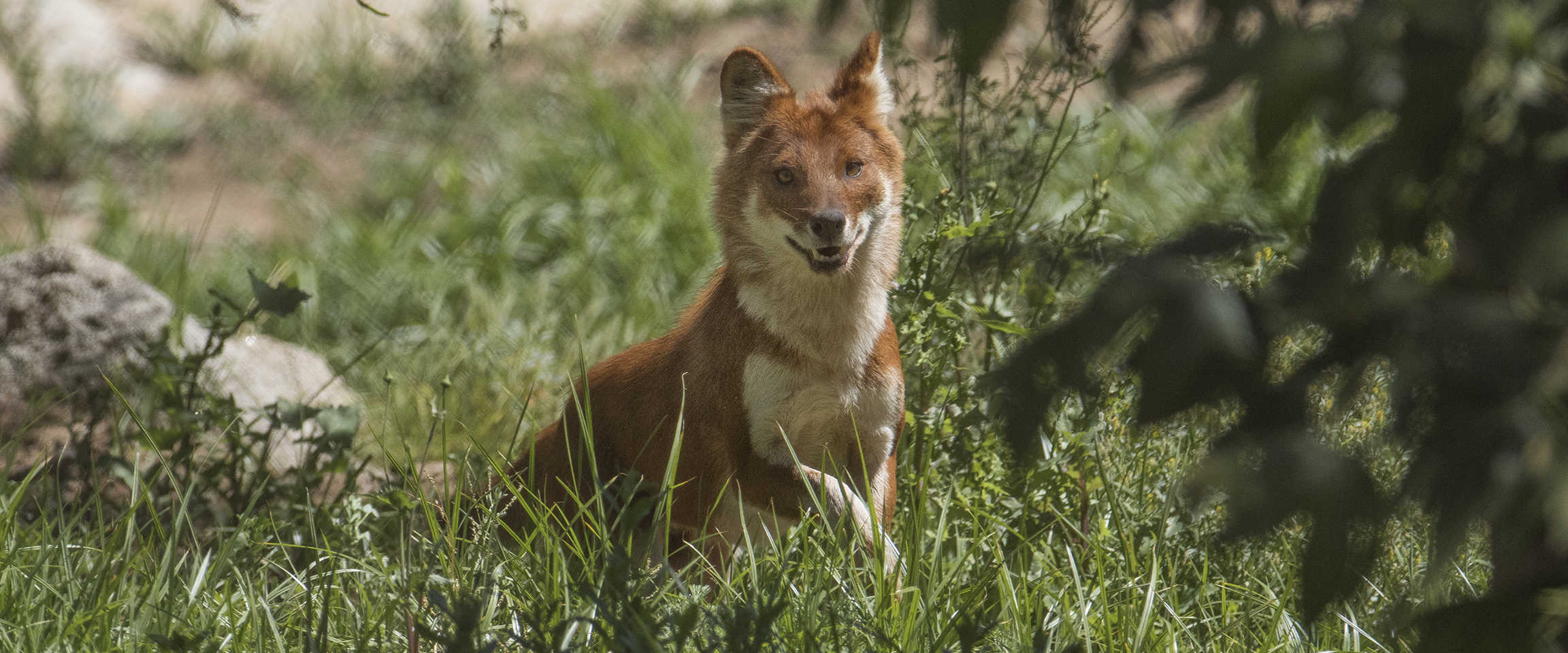
Dhole Drama
While the keepers are still getting acquainted with each dog, there is a clear hierarchy in the group that must be adhered to. “We always feed them in order of dominance,” said Tina, which avoids conflicts later. For instance, Lucius recently lost his top-dog status to one of his sons, Sanuk, so he is now fed second. Each animal gets a special ground-meat canine diet daily and a rabbit and femur bone weekly. “We hand-feed them so each animal gets its fair share.” It can be difficult to tell the dogs apart, aside from Lucius missing a piece of his ear and the youngsters lacking white fur on their chest and feet. But the individuals reveal themselves in other ways. “We go by behavioral differences more than physical differences,” explained Tina. Even that can be challenging, as “they rarely want to be separated from one another.”
Dholes are pack-driven animals, and their keepers are learning the etiquette of the pack dynamics while also working with individuals for husbandry purposes. To maximize animal welfare and healthcare and minimize stress to the animals, each dhole—Sanuk, Lucius, Beni, Jetsan, Katsu, Torma, Kono, and Yoshi—will be schooled in practical behaviors like station (staying in a particular spot), down, sit, target, rise up, present paw, and open mouth. This training is accomplished through positive reinforcement with rewards, which deepens the animals’ relationship with their keepers and keeps the sessions upbeat and constructive.
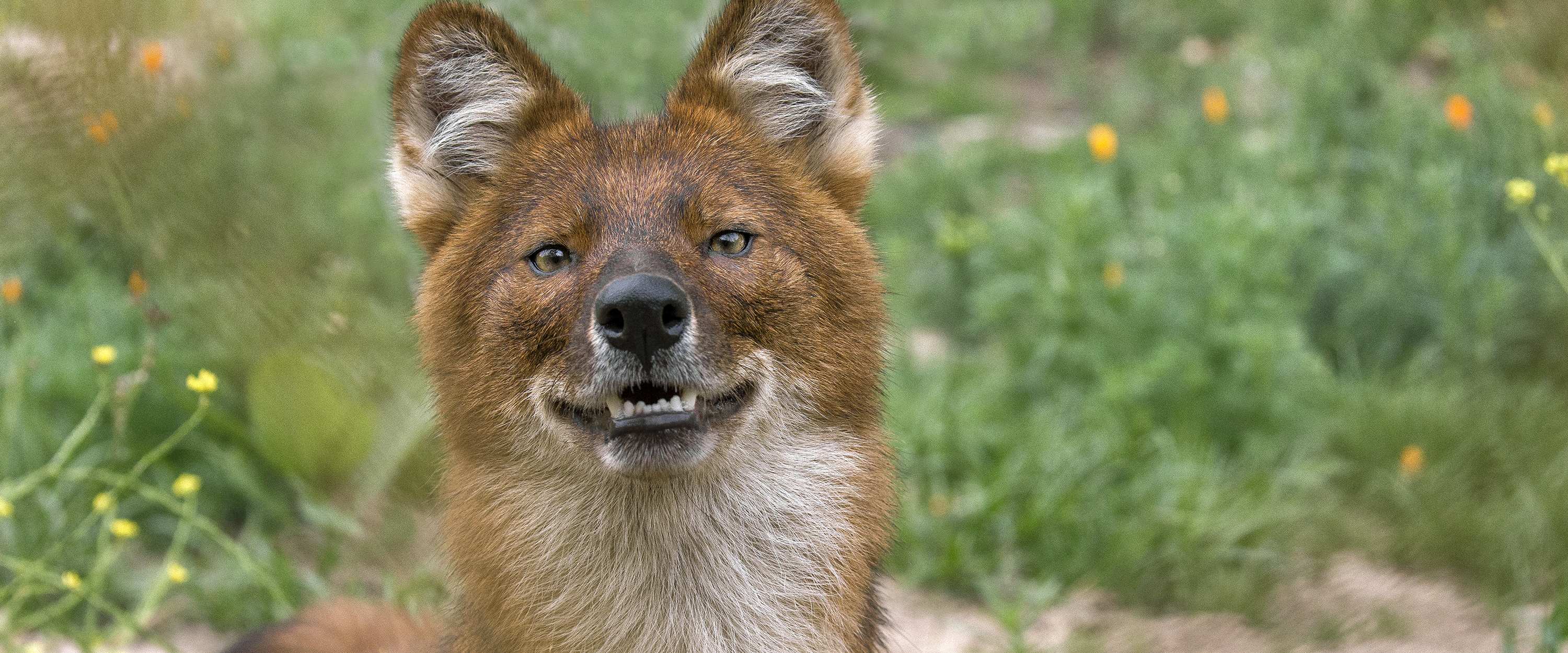
Dhole Talk
Despite the dholes’ resemblance to domestic dogs, they are still wild carnivores that deserve a wide berth. “They can be aggressive, so we only go in with the young ones,” said Tina, “and always with two keepers.” She explained that the dhole’s greeting includes snapping at each other—an expression of endearment for them, but not so endearing for humans. Dholes can be quite vocal, too, calling to keep in touch over short or long distances, which is handy when they are cooperatively hunting. Living in close-knit packs of 5 to 12 dogs—there is one breeding alpha pair and the rest help tend to the pups—communication in the form of whistles, barks, growls, alarm calls, and other chatter is key.
The International Union for Conservation of Nature estimates that there are fewer than 2,500 dholes remaining throughout their range in Asia, with a downward trend continuing. Threats include loss of habitat and prey base (mostly deer and other hoofed animals), and dholes are listed as endangered. Besides the Safari Park, only two other facilities in the US have dholes: The Wilds in Ohio and the Minnesota Zoo.
San Diego Zoo Global has been breeding dholes since 2001 in an off-exhibit breeding site; 20 pups have been born there to 4 different mothers. Our newest litter of dholes was born in January 2015, bringing our current off-exhibit pack population to 12. Because of the breeding success, the animal care staff was able to form the non-breeding group that has taken up residence in the Asian Savanna exhibit. So take a Behind-the-Scenes Safari and check them out. I double dog dare you!


